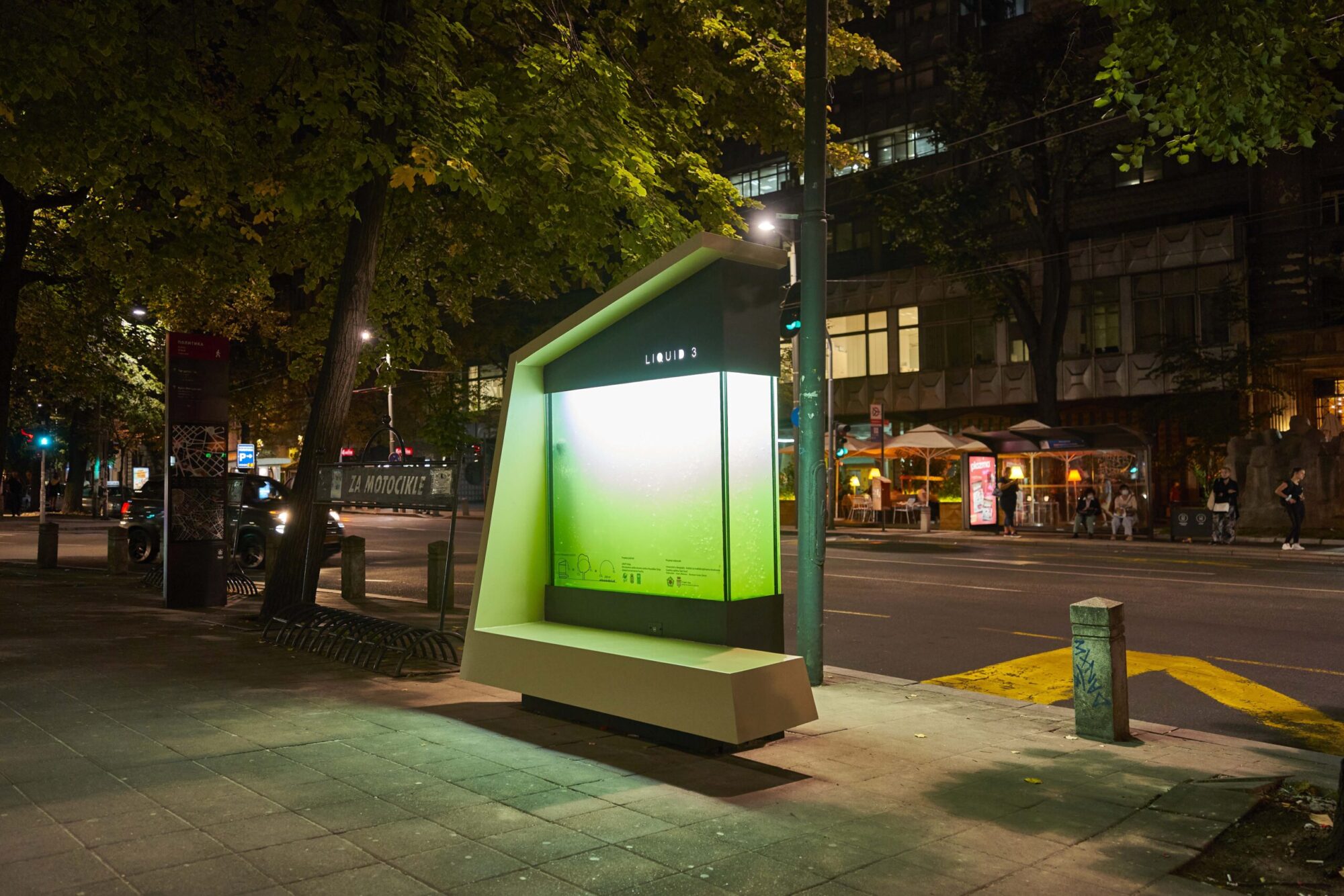Pollution | Innovation | Sustainable | Green

Cities are responsible for more than 70% of the globe’s carbon dioxide emissions, which are primarily caused by industrial and mechanised transportation networks that consume enormous amounts of fossil fuels.
In 2019, WHO estimated that outdoor air pollution in both urban and rural regions contributed to an annual 4.2 million premature fatalities globally — 89% of them occurred in low- and middle-income countries, mostly from the South-East Asia and Western Pacific Regions. These deaths are attributed to exposure to fine particulate matter, which is known to be responsible for cancers, cardiovascular and respiratory diseases.
To reduce environmental carbon dioxide (CO2) levels, governments and companies frequently resort to green plantations.
But our cities are getting congested and there is hardly room for green spaces.
To mitigate the issue, a team of researchers from Serbia has developed an innovative countermeasure: Liquid tree.
Liquid tree (termed LIQUID3) is a photo-bioreactor and essentially a tree impersonation in a water tank containing microalgae — which are microscopic single cells — that bind carbon dioxide and produce pure oxygen through photosynthesis.
These microalgae have the potential to replace one adult tree or 200m2 lawn. The upper hand of microalgae is that it is 10 to 50 times more efficient than trees and the bioreactor can be built and deployed a lot quicker and can begin processing contaminated air shortly thereafter.
This ground-breaking technology was developed by a team of researchers led by Dr. Ivan Spasojevic from the Institute for Multidisciplinary Research at the University of Belgrade, which emerged in late 2021.

The novel invention comes in a transparent 600-litre tank (around 158-gallon) filled with microalgae and is considered Serbia’s first urban photo-bioreactor, designed especially for urban settings to remove CO2 from city air. The confined space favors the precise control of light, temperature, and nutrient levels, resulting in faster growth and higher yields. Additionally, the method is scalable, making it possible to grow a lot of microalgae in a small area.
Currently placed in front of the Municipality of Stari Grad on Makedonska Street in Belgrade, a bustling metropolitan location with elevated CO2 pollution levels, LIQUID3 also serves as a bench and features solar power for the bench’s nighttime illumination as well as mobile phone charges.
The team behind LIQUID3 emphasized that their goal is not to supplant forests or tree planting but to use the system to fill urban pockets devoid of spaces for planting trees.
Bojan Bojić, Head of the Department for Social Affairs and Development Projects in Stari Grad stated that the project directly contributes to improving the quality of life of their fellow citizens, public health, and a cleaner environment using smart and innovative solutions.
Dr. Ivan Spasojevic also highlighted that the system does not require any special maintenance. The biomass created by the dividing microalgae can be used as an excellent fertilizer. They can also be used in wastewater treatment, as compost for green areas, for the production of biomass and biofuels, as well as for air purification from exhaust gases from factories.
Already, LIQUID3 is decorated as one of the 11 best innovative and climate-smart solutions under the UNDP Climate Smart Urban Development project due to its creative, practical, and innovative design.
LIQUID3 shows potential as better mitigation for changing climate, which will overall have a positive effect across all areas.
Measuring air quality
The Air Quality Index (AQI) reports daily air quality based on six scales from 0 - 500 indicating different levels of health concern:
1. 0 to 50 → Good
Satisfactory. The extent of pollution poses little or no risk.
2. 51 to 100 → Moderate
Acceptable. Some pollutants may be a moderate health concern for a small number of people. For example, people who are unusually sensitive to ozone may experience respiratory symptoms.
3. 101 to 150 → Unhealthy for Sensitive Groups
High risk for children, elderly people, and people with lung disease from exposure to ozone whereas people with heart and lung disease, older people, and children from airborne particulates.
4. 151 to 200 → Unhealthy
Adverse health effects for everyone. Members of sensitive groups may experience more serious effects.
5. 201 to 300 → Very Unhealthy
Health alert indicating that everyone may experience more serious health effects.
6. >300 → Hazardous
Health warnings of emergency conditions. The entire population is more likely to be affected.
Read More Stories
Kathmandu’s decay: From glorious past to ominous future
Kathmandu: The legend and the legacy Legend about Kathmandus evolution holds that the...
Kathmandu - A crumbling valley!
Valleys and cities should be young, vibrant, inspiring and full of hopes with...
Nepal’s high-altitude farms are thirsty. Could ice stupas help?
As snowlines rise and mountain springs run dry, Nepals high-altitude communities are facing...